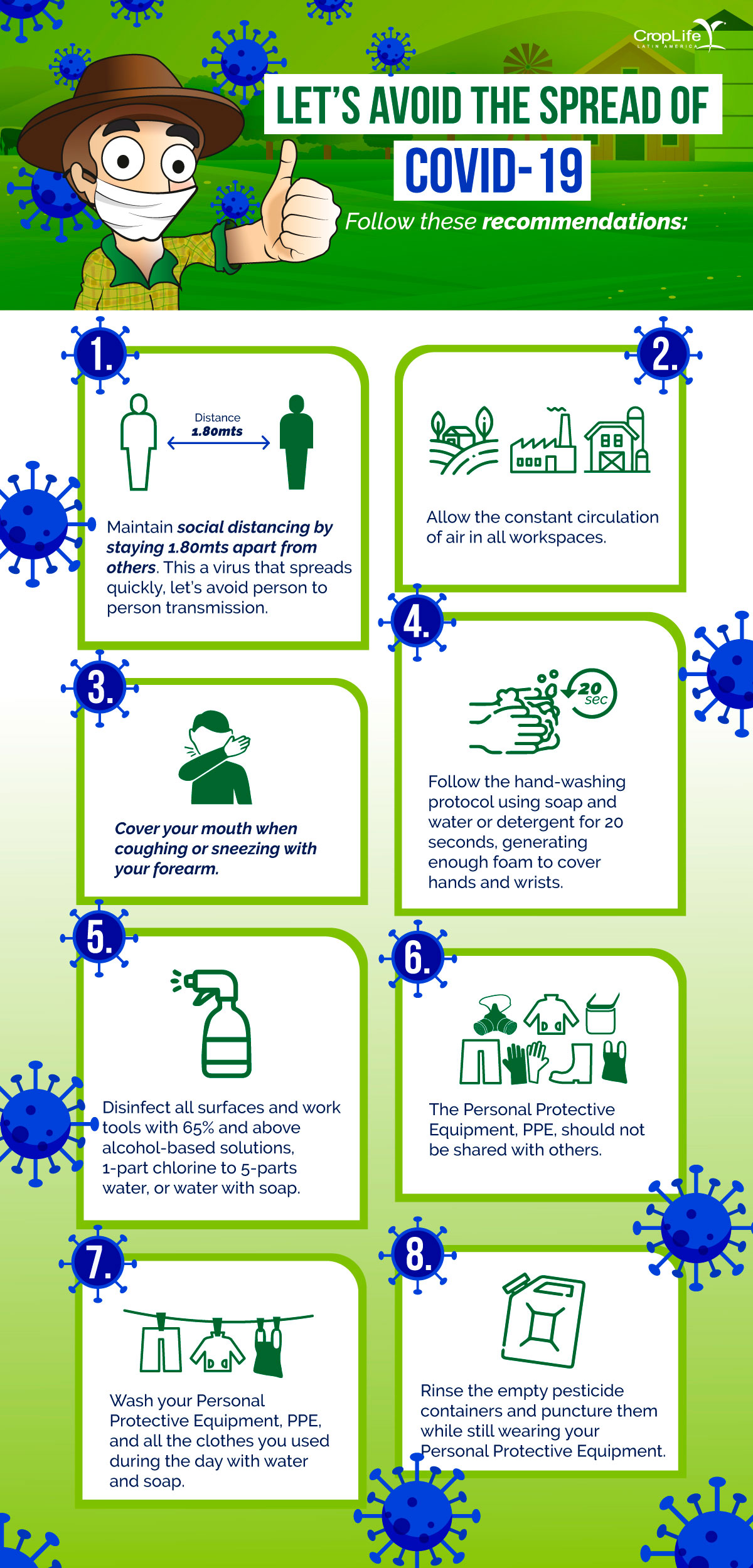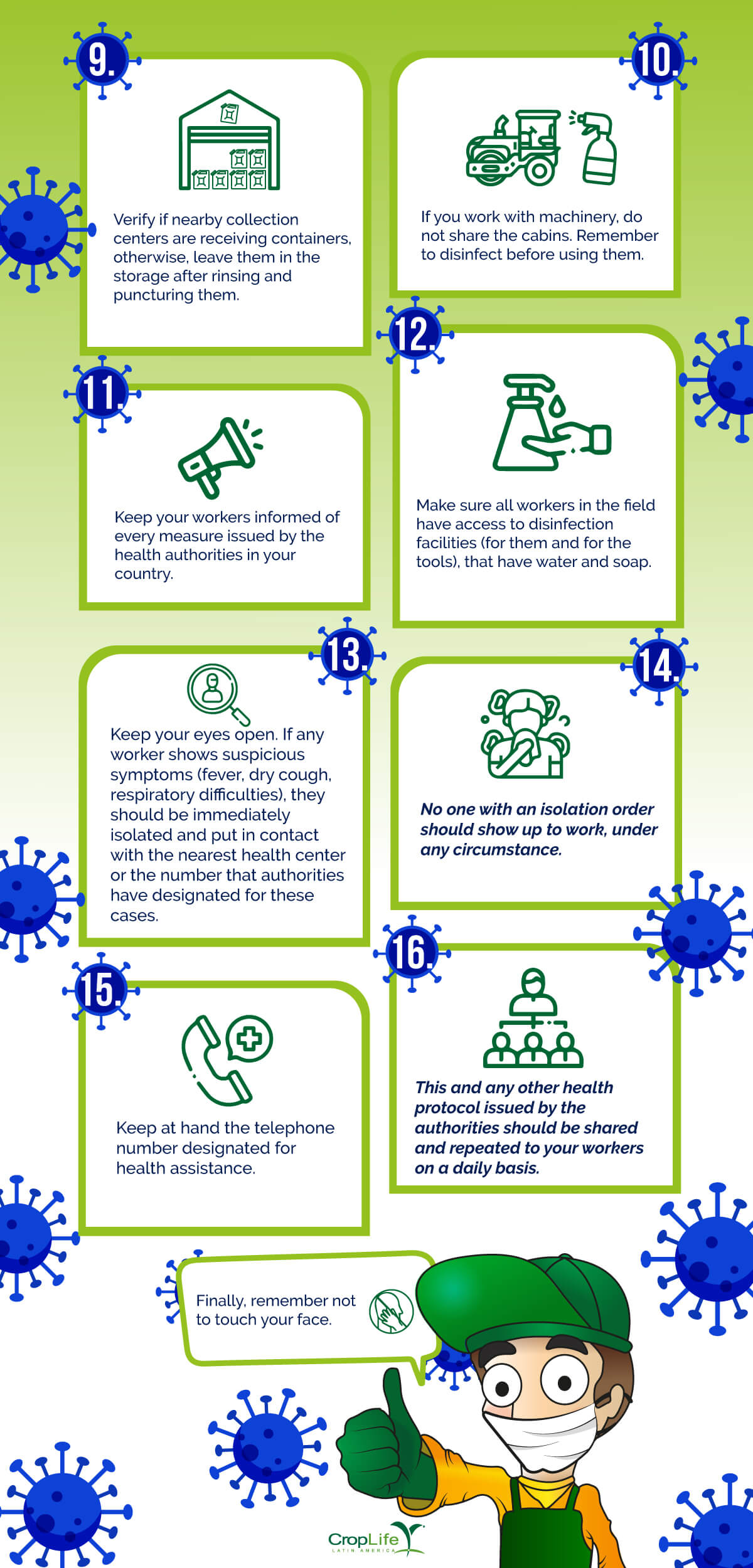Prepared to support farmers and a stable food supply
March 25th, 2020
In the face of the global crisis generated by SARS-CoV-2, we support all efforts to prevent and contain its spread and its health, economic and social impacts. The Industry represented in CropLife Latin America offers full support to farmers to ensure the timely supply of food.
Farmers are at the forefront of the food production process and today they are essential in preventing a health crisis from turning into a food supply crisis. For this reason, it is necessary to strengthen all measures to protect agricultural workers and their families, and to maintain the timely and safe transportation of agricultural and crop protection products.
With the clarity that agriculture does not stop, the network of National Associations in 18 Latin American countries are keeping open, where possible, some of the Collection Centers for the collection of empty pesticide containers in their territories. Please contact them for the timely return of the containers.
Additionally, we call upon farmers and the entire agricultural chain to responsibly abide by the instructions given by the health authorities of their country, to avoid the spread of the COVID-19 disease, as well as to follow the following recommendations:
Understanding coronavirus
- The virus is not a living organism, but a protein v molecule (RNA) covered by a protective layer of lipid (fat), which, when absorbed by the ocular, nasal or oral mucosal cells, changes its genetic code (mutation), and turns into aggressor and multiplier cells.
- Since the virus is not a living organism but a protein molecule, it is not killed, it disintegrates on its own. The disintegration time depends on the temperature, humidity and type of material where it lies.
- The virus is very fragile, the only thing that protects it is a thin outer layer of fat. That's why any soap or detergent is the best solution, because the foam CUTS the FAT (that's why you have to rub at least for 20 seconds, to make a lot of foam). By dissolving the fat layer, the protein molecule disperses and disintegrates on its own.
- HEAT melts fat, that's why it's good to use water above 25 degrees Celsius to wash your hands, clothes and everything else. Also, hot water makes more foam.
- Alcohol or any mixture with over 65% alcohol DISSOLVES ANY FAT, especially the external lipid layer of the virus.
- Any solution with 1-part bleach and 5-parts water directly dissolves the protein, as it breaks it down from the inside.
- Oxygenated water helps but not as much as soap, alcohol and chlorine. Peroxide dissolves the virus protein, but it must be used purely and carefully as it can hurt the skin.
- BACTERICIDE WON’T WORK. The virus is not a living organism like bacteria, and hence, cannot be killed with antibiotics, but their structure can be quickly disintegrated with the steps described above.
- Do not shake used or unused clothing, sheets, or cloth. While glued to a porous surface, the virus is very inert and disintegrates only within 3 hours (fabric and porous materials), 4 hours (copper, because it is naturally antiseptic; and wood, because it removes all the moisture and does not let it peel off from the surface, which leads to it disintegrating on its own) , 24 hours (cardboard), 42 hours (metal) and 72 hours (plastic). But if you shake it or use a feather duster, the virus molecules float in the air for up to 3 hours and can lodge in your nose.
- The virus molecules remain very stable in natural or artificial cold, like air conditioners in houses and cars. They need moisture and darkness to stay stable. Therefore, dehumidified, dry, warm and bright environments degrade it faster.
- UV LIGHT on any object that may contain it breaks down the virus protein. For example, it would be perfect to disinfect and reuse a mask, however be careful, it also breaks down collagen (which is protein) in the skin, eventually causing wrinkles and skin cancer.

















